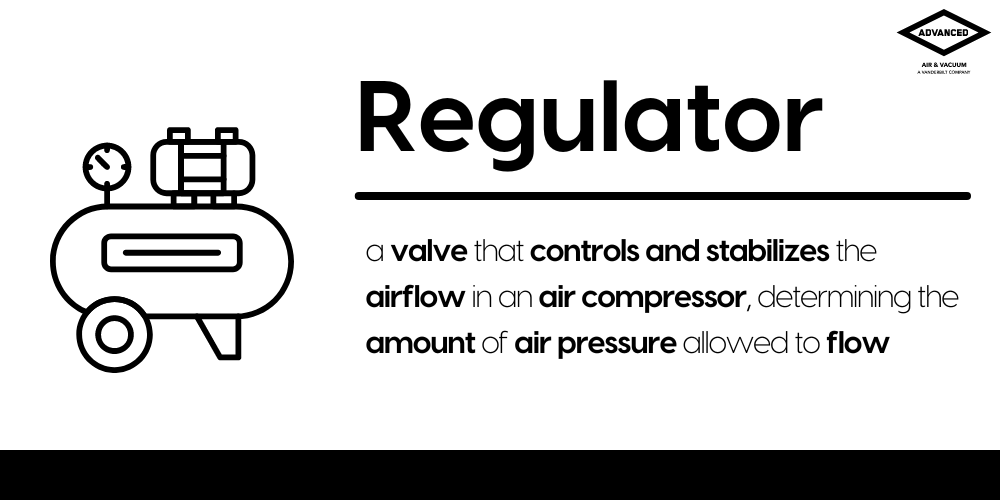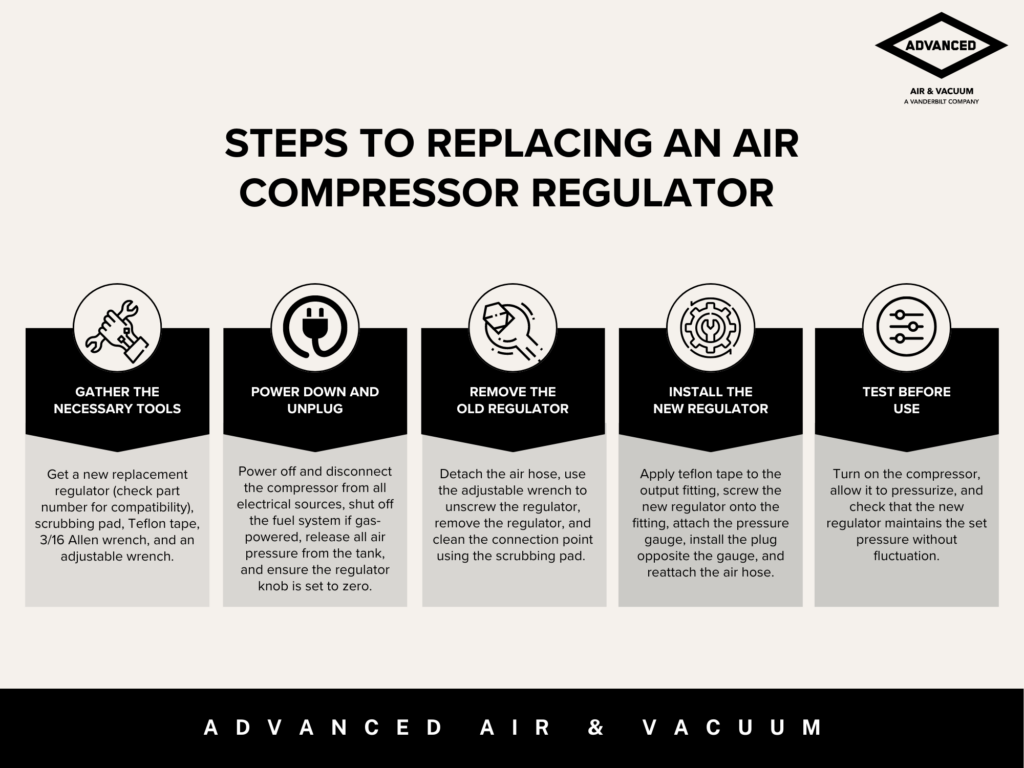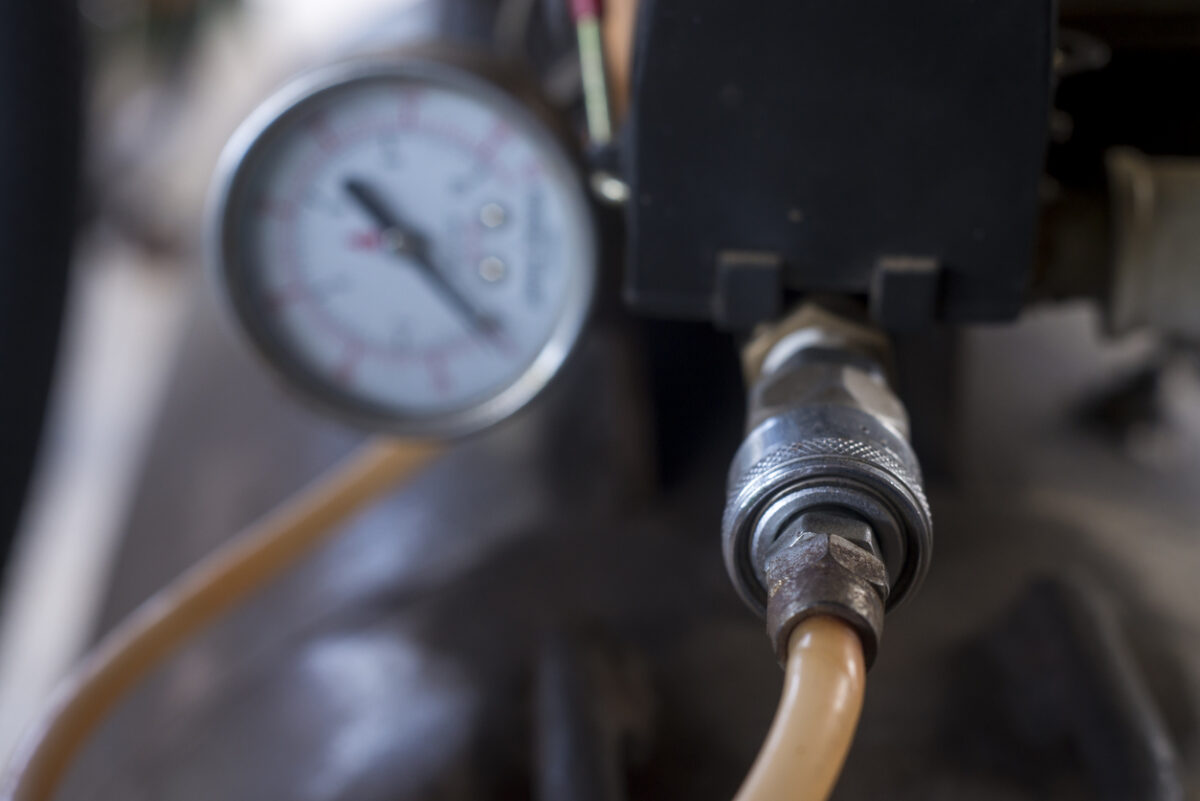Table of Contents
An air compressor regulator valve controls and stabilizes the airflow in an air compressor, determining the amount of air allowed to flow. Over time, this component can experience wear or damage, leading to fluctuations in air pressure that can negatively affect the performance of the air compressor. Making regular maintenance and timely replacement of the regulator crucial to ensure optimal performance and prevent potential damage to the air compressor or connected tools.

Identifying a Malfunctioning Air Compressor Regulator
Common signs that your air compressor regulator might need replacing are if there are noticeable discrepancies in pressure readings, consistent air leaks, or if the compressor motor is struggling to maintain the desired air pressure or PSI.
Another telltale sign of a malfunctioning regulator is an inaccurate pressure gauge. Typically, when the compressor is off, the tank pressure and air pressure readings should be similar. If you notice a significant difference in these readings, your pressure switch might be faulty or your regulator valve might need replacement.
Similarly, regular fluctuations in the air pressure switch or compressor switch can also suggest the need for a regulator replacement. For example, if your compressor is frequently cycling on and off or the air pressure varies unpredictably during use, it’s likely an indicator that the regulator is not performing correctly.
Steps to Replace the Regulator on an Air Compressor

1. Gather the Necessary Tools
- New Replacement Regulator: Ensure you have the correct part number for your specific compressor model. Check the user manual or call us at Advanced Air and we can help you find the right equipment.
- Scrubbing Pad: Will need to clean off parts of the compressor.
- Teflon Tape: Helps ensure the new regulator securely fits.
- 3/16 Allen Wrench: Needed to turn components.
- Adjustable Wrench: Needed to turn the regulator and other components.
2. Turn Off & Disconnect the Compressor:
Before beginning, ensure the compressor is completely powered down. This involves turning off the motor and disconnecting it from any electrical circuits to eliminate the risk of electrical shocks or unintentional startups. If dealing with a gas-powered compressor, ensure the fuel system is shut off.
Once the power sources are disconnected, release any stored air pressure in the tank. This can be done by opening the drain valve located at the bottom of the tank. Be sure to allow all the air to escape until there is no more pressure in the system. After making sure the regulator knob is turned to a zero setting, indicating no flow rate, you can start removing the old compressor.
3. Remove the Old Regulator:
Follow these steps to remove the old regulator:
- Detach the air hose from the regulator.
- Place the adjustable wrench around the regulator’s nut or locking collar and begin turning the wrench counterclockwise. Be careful not to damage the manifold, which ensures air is distributed evenly within the system, when removing the old regulator.
- Remove the old regulator.
- Clean the connection point with the scrubbing pad.
4. Install the New Regulator:
Follow these steps to install the new compressor:
- Apply teflon tape to the output fitting, which is the primary connection point between the regulator and the compressor’s airline. Ensure you wrap the tape in the direction of the threads to prevent it from unraveling when you screw on the new regulator. Additionally, be careful not to cover the end of the fitting with tape because this can restrict airflow and decrease the compressor’s performance.
- Thread the regulator onto the fitting. Air flows in one direction through the regulator, which is normally marked by an arrow on the regulator itself. Make sure this arrow points in the correct direction relative to the airflow in your system for it to perform correctly.
- Attach the pressure gauge to one side of the regulator.
- Using the 3/16 Allen wrench, install the plug on the opposite side of the pressure gauge.
- Reattach the air hose.
5. Test the New Regulator:
After replacement, it’s critical to test the regulator to ensure it’s functioning properly. Turn on the compressor and allow it to fill with air, then watch the pressure reading. The regulator should maintain the set pressure without fluctuation. If it does, you’re good to go! If it doesn’t, don’t panic, like with any repair or replacement, some issues might arise post-replacement. Here are a few common signs that something could be off and potential solutions.
Common Post-Replacement Issues and Solutions
Air Leaks
Discovering that your air compressor is leaking air after a recent regulator replacement can be frustrating. This can be due to not securing the new regulator properly or the presence of worn-out seals and fittings. In such cases, you will need to find the source of the leak, which can be done by running your fingers over and around the fittings and ports or using a spray bottle with soapy water to find bubbles that will form at the leak. Once you identify the leak, you may need to reinstall the regulator or replace any defective seals or fittings. If you re-install the regulator, be sure to replace the Teflon tape.
Overly High or Low Pressure
If your compressor quickly builds too much pressure or fails to reach the necessary pressure, it could be due to an incompatible regulator, a faulty pressure switch, or a blocked vent. So double-check if the regulator is compatible with your compressor, examine the pressure switch, clean the vent if necessary, and test the system again to see if the issue is resolved.
Selecting the Right Replacement Regulator
Before you begin the process of replacing your air compressor regulator, it’s crucial to ensure you have the right replacement part.
Type of Regulator
There are primarily two types of regulators – single-stage and two-stage. Be sure that the regulator you select matches the specific requirements of your compressor system.
Pressure Range
It is vital to choose a regulator that aligns with the pressure range of your air compressor. A regulator that cannot handle your compressor’s capacity will lead to poor performance and an increased risk of failure.
Flow Rate
The flow rate of a regulator determines how much air can pass through it at any given time. It’s crucial to choose a regulator with a higher flow rate than the tools and applications you plan to use to ensure there is no drop in performance due to an insufficient air supply.
Size
Ensure the regulator fits well into your air compressor setup. An overly large or small regulator can be impractical and negatively impact your compressor’s operation.
How Advanced Air & Vacuum Can Help
We provide a range of services for air compressors and vacuum pumps, including sales, installation, repair, and maintenance of nearly all recognized manufacturers. Additionally, we offer specialized project consultation services, working closely with engineers, plant managers, small business owners, and homeowners to ensure you get the most suitable machinery, tailored specifically to meet your needs.
Whether you’re looking to purchase a new air compressor or need assistance with installation, repairs, or maintenance, AAV is your one-stop shop for professional-grade industrial air compressor services. For expert advice or to learn more about how we can assist you, contact us or give us a call.

